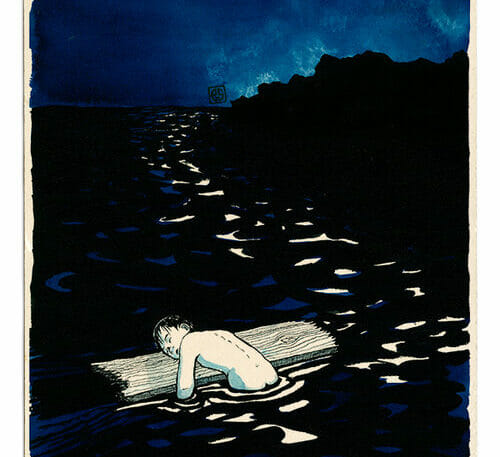A few years ago, I was introduced to therapist and healer Francis Weller and his beautiful book, The Wild Edge of Sorrow. In this book, Francis invites us into a conscious and courageous relationship with grief and sadness.
Grief and sadness offer so many riches, but they are often misunderstood – this is especially true in many modern Western cultures like my own.
So many of us carry around a burden of undigested and unintegrated grief. If you’re highly sensitive or someone who feels deeply, you may not have had many companions throughout your life who could meet and hold your grief.
When we eat to care for our grief
Our undigested grief can show up in so many ways – as a desire to succeed at all costs, as a quest for a perfect body, or a need to be the best.
My grief showed up as trying to ‘do better’ than those who hurt me, which fueled all sorts of painful perfectionism and striving.
And grief is often prevalent in our relationships with sugar, our bodies, and food.
Sugar and food can help shield us from what may feel too painful to face, what my beloved mentor Dr. Neufeld calls that which is ‘too vulnerable to bear.’
For many sensitive people, food rises to meet us in these hollow spaces – food becomes the ‘holder’ of our grief and sorrow when we don’t have loved ones or elders who can hold our grief alongside us.
Sometimes we don’t even know that grief is present or is being touched in us until much later – say, when we notice that we’re eating every night in the quiet hours before bed.
Food becomes both the protector from overwhelming pain and the loving witness to it. With food, we feel felt, validated, seen and heard.
But the food brings its own grief, and its own burden. We feel the double grief of the original wound and now the wound of overeating.
How to care for the grief that arises in food
If we’re eating to care for overwhelming pain or grief, we may think that we need to ‘get our act together’ and ‘cut out’ the grief eating. This is understandable, but it’s often our mind talking – minds that are disconnected from our hearts and bodies.
Instead, if this resonates with you, I encourage you to focus on surrounding yourself with lots of warm support so the grief can gently emerge out from underneath the protective shield of food.
The grief has wisdom, and so much to say.
You might find it helpful to journal, draw, collage, or connect with a trusted loved one. You might offer a space for the grief that is arising.
Giving our grief an outlet – and lots of warm support – can help us care for it and gently detach from the ways we shield it with food.
Our innate longing to be whole
It is a holy mystery how we heal and unfold.
Our pain yearns to be integrated; we long to be whole. We long to know and feel our whole-ness – where all of our experiences are welcomed inside the circle of our lives.
Our pain calls for the care it needs to be witnessed, digested, and held. We can trust this movement – for it’s the movement all living things have to blossom from the dark: to grow, to unfold, and to thrive.
Like plants, we seek the light. We send our tendrils up and out. And on the other side of this holding, when our grief becomes integrated, it morphs into something else.
It starts to look like compassion and wisdom, strength and insight. It becomes the courage to try again, the acceptance of our imperfection, and the willingness to try and fail.
We can see the bigger picture, and live from this story – a more solid sense of self, rooted in our wholeness – rather than the story of our shame.
My wish for you is that you may have rich support to open to your grief, and overflowing kindness as you step into those waters.
I wish compassion for the ways food has buffered the pain in the meantime and a new perspective on the depth of your strength.
May the seeds of your grief be surrounded by the sunlight of warm care, the moistness of tears, and the richness of abundant compost so they may bloom into beauty after beauty. May you bloom and bloom open.
Image credit: Australian artist Eddy Sara has given us his kind permission to use his art piece, Let Grief Wash You To Another Shore.
